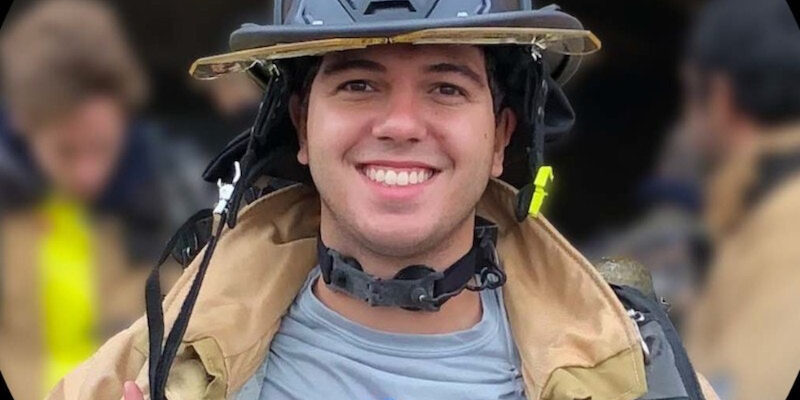I met Paul Couston through Jonathan Ellis of Sandalphan Capital who had nothing but praise for the CEO and co-founder of Ascent Integrated Tech. Just two years out of the University of Illinois Urbana-Champaign, he’s already a seasoned CEO with two startups under his belt and an alumna of Techstars Chicago (2018). Paul and his co-founder, Alex Gorsuch, are tackling a hot industry, firefighting, with a platform tech solution that gives commanders more oversight and control over firefights as well as the health and safety of firefighters. The VisionTech Screening Committee and I invited Paul to present at our April 27 virtual pitch events. Here’s a preview of Ascent’s technology, progress to date and details on the round.
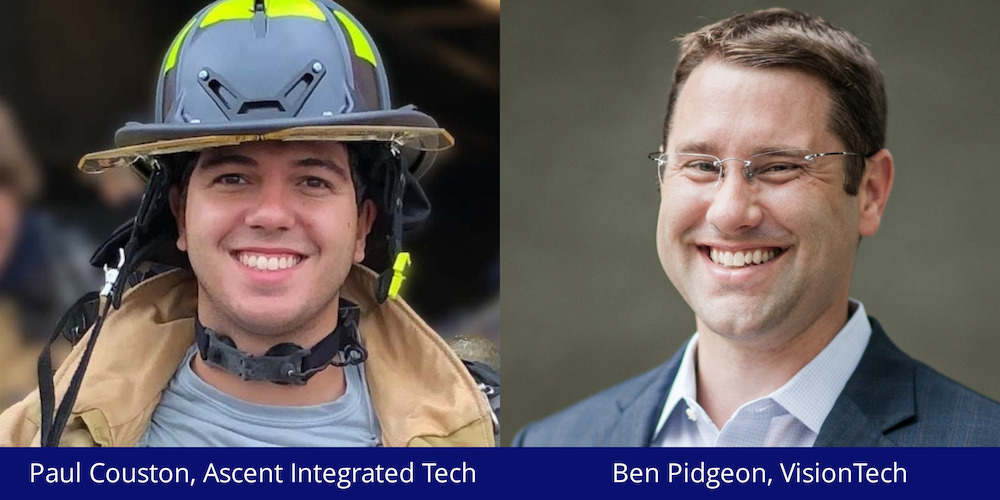
BP: Tell me a little about yourself. Is this your first startup?
PC: No. I actually started my first venture, Optivolt Labs, while at the University of Illinois. Optivolt builds micro-solar technology that allows for self-charging phone cases, e-scooters, sensors, satellites, and commercial drones. I took some time off from school to participate with Optivolt in Techstars Chicago in 2018. This led to us making incredible contacts in Chicago’s venture ecosystem, raising millions in venture capital, employing a full team of engineers in Silicon Valley, and building deployable solar generators for the U.S. Air Force and the 21st Space Wing. I stepped back from Optivolt in 2020 and returned to the University of Illinois to finish my degree. I’m a shareholder in Optivolt and they’re doing well.
BP: What’s the backstory on Ascent Integrated Technology? What “sparked” your interest in firefighting? How did you connect with your co-founder?
PC: Alex and I met while serving as mentors with the University of Illinois I-Venture Accelerator for students. We both had previous startups, were both looking for our next company, and knowing this, people said, “You need to meet the Viking.” The Viking being Alex, who has a commanding presence, an impressive beard, makes mead, and is a fearless entrepreneur. We met and had a lot in common based on experiences with our past startups.
Unlike other founders who have direct experience in their industry, neither Alex nor I have a background in firefighting. We kind of stumbled into the fire service and the fire service accepted us with open arms. What’s interesting is firefighting is steeped in tradition and reliant on knowledge gained across decades yet is still very open to new technology. The number one objective is to keep the team safe and pass down their knowledge. Going in, we quickly realized our mission was not to fundamentally change firefighting. Instead, we are augmenting traditions, processes, and knowledge with technology that enables optimal management of fire events and the health and safety of firefighting teams.
BP: What are the unmet needs in firefighting? How did you validate product-market fit?
PC: Firefighting for the most part has been very traditional and reactive to what firefighters find on the ground at a fire. For example, when firefighters arrive on scene, they conduct a 360-degree assessment on foot around the fire’s perimeter. So valuable time is lost between dispatch and arrival. Incident commanders typically set up a large whiteboard on site at the fire and manually track people and resources. While this may work on smaller fire events, it’s impractical for large industrial or disaster events when multiple fire companies and hundreds of firefighters and other responders are involved. There’s also a wealth of past history battling all kinds of fires. We wanted to determine the best way to tap into this knowledge so it can be leveraged in the future on our platform.
In 2022, we conducted exhaustive customer discovery interviews with some 1,900 fire departments from across the United States. Our goal was to collect operational insights, pain points, current tactics and processes, and get reactions to the solution we envisioned. Common feedback we got was how revolutionary it would be to have the ability to monitor firefighters’ locations in real time – before, during and after a fire event. There was tremendous excitement among those we talked to. The insights we gained have been critical to product development. We continue to work with a number of highly engaged fire stations around the country to fine tune our solution.
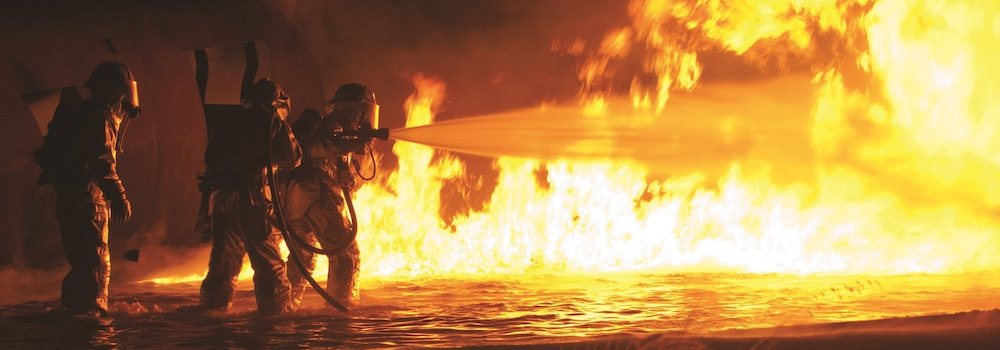
BP: Explain briefly how your solution works.
Ascent is a unifying platform for incident command that allows the commander to better plan and manage tasks, monitor the health and location of firefighters, and capture data about each fire event to support future firefighter training and response. The core goal is to allow for localization of firefighters to help achieve safe, positive outcomes.
When a fire alarm goes off and the incident command has the address of the fire, our platform has a web-scraping tool that pulls data from Zillow, Redfin, Apartments.com, Google Street View, and other sites to get approximate floor plans and even construction materials so they have a good assessment of what to expect and can start pre-planning. Once onsite, the firefighters wear an Ascent module on their helmets and an Ascent wristband health monitor. The helmet module enables incident commanders to confirm a structure’s floor plan, monitor movements and other data points of firefighters in real time. It’s extremely accurate, determining within three feet of where each firefighter is. The helmet module also allows us to build a heat map and have better insights into how the fire is behaving.
The module and the wristband also give the commander insights into the toxicity of the fire, a firefighter’s movements, heart rate, and other data points that lets them know if individuals are succumbing to heat or smoke inhalation. Firefighters continue to wear the wrist band health monitor post fire to make sure heart rates are returning to normal as heart attacks are the number one cause of firefighting-related deaths. Here’s a video with more detail.
BP: Explain your two customer categories and why each is important.
PC: We have two customer categories, civilian and military markets, each with an incredible need for our technology. Civilian firefighters are the municipal services we see in communities across America. The U.S. Department of Defense (DoD), and specifically AFWERX, a program of the U.S. Air Force that fosters innovation, has a lot of funding available to improve firefighting technology. The DoD funds these projects because of the dual use by the military and civilians. The advantage of DoD contracts is the funding is non dilutive plus what we learn and develop is applicable to both markets.
We just got some big news from AFWERX that we have been awarded $2.5 million from U.S. Air Force fire response and are now pursuing a dollar-to-dollar match up to 15 million. We’ve been working on this for 18 months and just got confirmation!
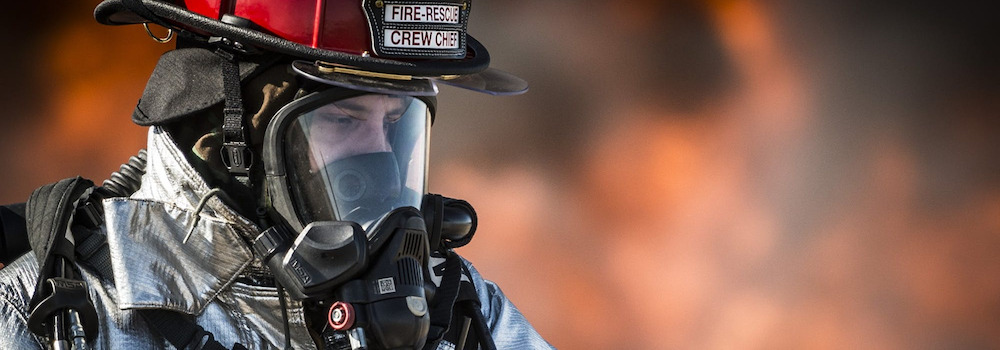
BP: That is great news! Congratulations.
PC: Pretty happy about it.
BP: Do you have any competitors?
PC: There are definitely others doing software for firefighters, including major manufacturers like Motorola and Scott. Given we’re all trying to replace technology developed during the Vietnam War, there is a lot of room for improvement. At this point, the space if very fragmented and companies are addressing niches within firefighting. Our objective is to be the Google of the firefighting industry with the central operating system for firefighters. With this in mind, the best path forward may include licensing to other companies or partnering with manufacturers on a universal platform.
BP: What is your total addressable market?
PC: Being early stage, we are initially focused on U.S. civilian firefighting departments and Air Force firefighters as our beachhead. This on its own is a $557 million market. When fully deployed globally, we’re looking at a $50 billion market. This includes expanding those using our solution beyond firefighters to SWAT teams, special forces, HAZMAT operators, and professions working in confined spaces.
BP: What’s your revenue model?
PC: It’s a recurring revenue model with pricing based on a per firefighter basis of $1,000 per year. We are looking at an average contract length of 10 years. So a 50-person department would generate $500,000 in gross revenue over 10 years. The equipment cost is included in year one.
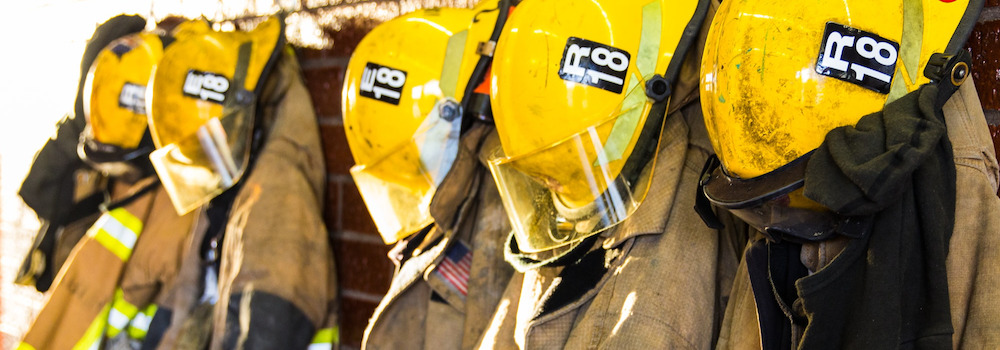
BP: Where are you in terms of commercialization?
PC: Last year was focused entirely on customer discovery and product development. We also closed a $1.6 million Pre-Seed Round and secured $700,000 in U.S. Department of Defense contracts. In 2023, our priorities are on piloting the product, continuing to build upon our defense contracts and securing pre-orders among fire departments. So far this year, we’ve booked $2.8 million in defense contracts and have $2.7 million in pre-orders from 24 fire departments in five states.
BP: What kind of intellectual property protection do you have?
PC: We have four global patents pending. It’s not about the helmet or the sensors, but how the system acts as a whole that is patentable.
BP: What round is this?
PC: Some people call this a bridge round, but we’re calling it our priced financing round. The goal is to quickly raise $1 million. We have about $700,000 in commitments, which leaves about $300,000 for VisionTech and the other angel investors who have expressed interest. The round is going to close by May 19, so we’re moving fast and may oversubscribe slightly.
BP: What is your planned use of funds?
PC: Let me tell you what we’re not using these funds for first. We are not using equity dollars to finance the product. Instead, we’re using the funds from this round to hire specific senior level engineers, clean up our cap table, and extend our runway to and prep for our Series A.
BP: Give me three reasons why VisionTech Angels members should invest.
PC: First, this really is about the bigger mission of protecting the health and safety of firefighters and becoming the global platform for firefighting technology. Second, we have an unfair advantage in how to secure non-dilutive funding. I don’t know too many startup founders that have $15 million in non-dilutive funding like we have with the STRATFI funding through AFWERX. This is an incredible war chest for R&D and commercialization. Third, Government contracts have a long sales cycle and are very hard to get, but once you have them, they range from three to ten years and are very sticky. It is not fun, but we know how to get them.

VisionTech Angels’ April Pitch Events will be virtual on Thursday, April 27 at Noon and at 6 p.m. ET. Pitch events are open to our members and accredited investors interested in joining our group. To register, check your email for an invitation, go to our Events page where you’ll find the RSVP links, or email Ben Pidgeon at bpidgeon@visiontech-partners.com
